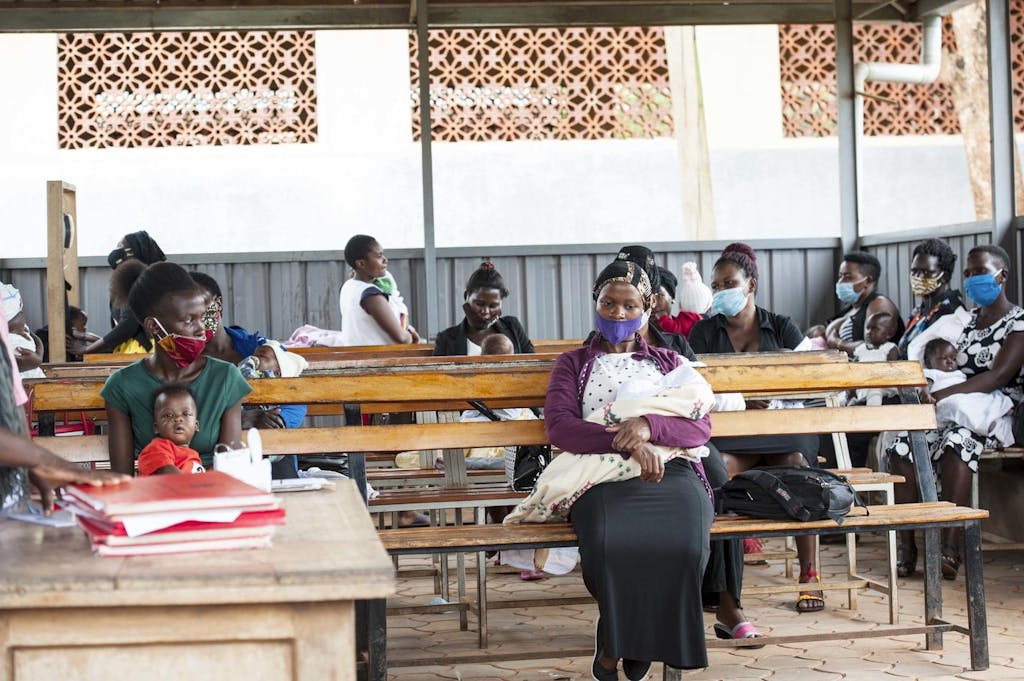While COVID-19 still spreads across the world, the need to maintain the fight against polio and other vaccine-preventable diseases goes on. Thousands of front-line polio workers continue to fight polio while at the same time supporting the COVID-19 response — all while having to adapt to increasingly difficult working environments amid lockdowns, constrained resources, and stringent infection control measures.
Global networks to stop health threats
The Global Polio Eradication Initiative (GPEI) has built an extensive network around the world to bring the polio vaccine to every child around the globe, especially those hardest to reach. This network reaches deep into remote corners of countries with fragile health systems and provides unique access to some of the world’s most marginalized and vulnerable populations.
The polio program is no stranger to health emergencies. In addition to its extensive experience in detecting and responding to polio outbreaks, it has a long history of responding to outbreaks of other vaccine-preventable diseases such as measles, diphtheria, and yellow fever — as well as emerging global health threats. In 2014, Nigeria’s polio emergency operations center led the efforts to contain an outbreak of Ebola, preventing what could have become a much larger international crisis. In 2015, polio staff assisted emergency relief efforts after a devastating earthquake in Nepal.
Stepping up to respond to the COVID-19 crisis
Last year, when the pandemic hit, the polio program once again stepped up to lend its valuable resources to the COVID-19 response.

In many places, polio programs are often communities’ only touch points with health care. As the World Health Organization (WHO) Regional Director for Africa, Dr. Matshidiso Moeti, recently said, “In Africa, no one has the footprint of the polio program nor the expertise for mounting effective response campaigns. So with COVID-19 threatening to overwhelm health systems, the extensive polio response network is once again lending crucial support as countries build up systems to contain COVID-19.”
The polio program’s skilled human resources, extensive surveillance and laboratory networks, and emergency operations centers immediately adapted to the COVID-19 context and shifted to provide critical support to the spreading pandemic in many locations around the world.
The polio network is also providing invaluable support to the COVID-19 response through its strong social mobilization network, which has fostered trusted relationships with health officials and community leaders over several decades.
A recently published WHO report highlights just how vital polio infrastructure has been to bolstering the COVID-19 response in the African, Southeast Asia, and Eastern Mediterranean regions. Polio workers have offered critical COVID-19 support to vulnerable populations, including nomadic populations in Kenya and Rohingya refugees in Bangladesh, enabling what would have potentially been catastrophic COVID-19 outbreaks to be effectively managed and controlled.
Sustaining the polio network for emerging health threats
As the world approaches global polio eradication and polio funding steadily decreases, the network and infrastructure that the polio program has created over the past three decades — which serve much broader health programs than polio alone and protect global health security — are at risk.
More importantly, the fight to end polio is not over. If we want to make polio only the second disease behind smallpox to be eradicated in human history, we must continue to shore up polio programs and investments.
The renewed attention that COVID-19 has given to health systems and vaccination as a whole provides a unique opportunity for all global actors to come together and take steps to ensure that the investments made for COVID-19 integrate the polio program infrastructure into broader national health systems. This will ensure that these assets remain available to finish the job on polio and also respond to future health emergencies.
Featured Photo: Asad Zaidi/ UNICEF



 View All Blog Posts
View All Blog Posts


